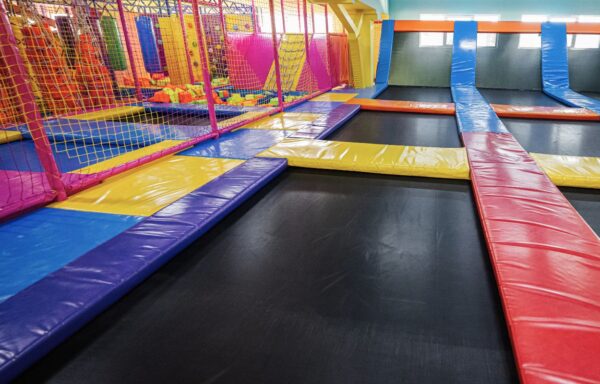Trampoline Park Misses the Mark

Case Summary: Plaintiff was 14 years’ old when he visited Defendant’s trampoline park with his family. Intending to jump into a foam pit, Plaintiff inadvertently jumped from a raised platform to a small, angled trampoline, striking his right shin on the trampoline’s frame. The impact caused him to suffer a fractured tibia and fibula.
Deposition testimony of Plaintiff and his father indicated that Plaintiff’s right shin struck the side of the padded frame adjacent to the foam pit. Video of the incident showed Plaintiff’s feet landing fully under the padding surrounding the trampoline mat, confirming that the leg struck the padded frame, causing the fracture.
Expert Analysis: Trampoline parks have a duty to provide a reasonably safe environment. Young patrons cannot be expected to appreciate the potential dangers, as presented in this case.
There are two prevailing reasons this incident occurred:
• Plaintiff’s body was propelled forward due to the angle of the small trampoline, resulting in his impact with the padded metal frame.
• Plaintiff’s foot hit the enclosure under the pad and trampoline’s frame before he rebounded into the foam pit.
Positioning a trampoline at an angle was unreasonable for several reasons:
• Increases in the number of incidents resulting in injury.
• Causes the body’s center of mass to move forward.
• Results in variable landings.
In his deposition, Plaintiff’s father reported an audible “crack” as his son’s leg struck the trampoline frame. It is likely that the padding on the trampoline’s frame had been worn at the time of this incident, which would explain the sound. Although the frame was not exposed, worn padding would equate to loss of attenuating properties and thus pose additional dangers.
The American Society for Testing and Materials (ASTM) International provide acceptable industry guidelines and standards that should be followed by any recreational facilities or attractions with trampolines. ASTM 2970-15 discusses how trampolines should be constructed in accordance with these standards and have foam padding to cover the steel trampoline frames and springs. The purpose of the foam padding is to act as a safe barrier between the metal frame and a person, providing protection in event of contact, reducing the likelihood of a serious injury resulting from impact.
Trampoline manufacturers are to provide proper instructions on inspection, maintenance, and when to replace these pads to keep patrons safe. Over time the padding can be compromised, failing to provide sufficient impact attenuation or prevent serious injury.
Due to the size and positioning of the trampoline involved in the subject incident, the facility should have provided an increased amount of padding or increased instruction to patrons to decrease the risk of injury. Defendant failed to provide any instruction on the proper way to use the angled trampoline. Defendant also failed to adequately mark the trampoline mat to indicate the “sweet spot” for jumpers to aim in order to avoid striking the padding or frame. Finally, Defendant should have provided proper risk analysis for the use of an elevated platform in transitioning onto a smaller trampoline.
Expert investigation determined Defendant failed to meet the standard of care for facilities with trampolines. The failure to meet relevant industry standards caused the subject incident and Plaintiff’s resulting injuries.
Result: Case settled.
Laura M. Miele, Ph.D.
Sport, Fitness, and Recreation Expert
View all articles by Laura M. Miele, Ph.D.

